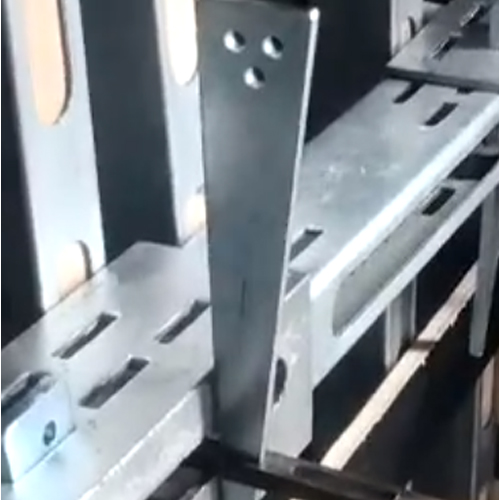
steel brackets for timber frame construction
Steel Brackets for Timber Frame Construction Strength and Versatility
Timber frame construction has seen a resurgence in popularity due to its aesthetic appeal and environmental sustainability. However, the structural integrity of these buildings largely depends on the construction techniques and materials used. Among these materials, steel brackets play a crucial role, providing the necessary support and stability for timber frames. This article explores the significance, benefits, and varieties of steel brackets used in timber frame construction.
Understanding the Role of Steel Brackets
In timber frame buildings, the fundamental challenge is to ensure that the wooden components are securely fastened and able to withstand various stresses. Steel brackets serve as essential connectors between timber elements, allowing for efficient weight distribution, resistance to lateral forces, and overall structural stability. These brackets are designed to enhance the performance of timber frames by minimizing the risk of failure at connection points, where stress and movement are often concentrated.
Benefits of Using Steel Brackets
1. Strength and Durability Steel is renowned for its high tensile and compressive strength. When used in conjunction with timber, steel brackets provide robust reinforcement that can handle significant loads and environmental stresses, such as wind and seismic activity. This strength ensures that the timber frame remains intact over time, contributing to the building's longevity.
2. Versatility Steel brackets come in a variety of shapes and sizes, making them suitable for numerous applications in timber frame construction. From simple L-shaped brackets to more complex custom designs, they can be tailored to fit specific project needs, accommodating various joint configurations and load requirements.
3. Cost-Effective While the initial cost of steel brackets may be higher than some other fastening methods, their long-term benefits significantly outweigh these costs. The durability and strength of steel reduce the likelihood of future repairs or maintenance, leading to lower overall expenses throughout the building's life.
4. Ease of Installation Many steel brackets are designed for quick and easy installation, which can significantly reduce labor costs and construction time. With pre-drilled holes and customizable designs, builders can swiftly secure timber elements without extensive modifications, allowing for more efficient project timelines.
steel brackets for timber frame construction

5. Enhanced Aesthetics As timber frame construction often showcases the beauty of natural wood, steel brackets can be designed to complement and enhance this aesthetic. By choosing finished or decorative steel components, builders can create visually appealing connections that contribute to the overall architectural style of the building.
Types of Steel Brackets
There are several common types of steel brackets used in timber frame construction, each serving specific functions
- L-Brackets These are used to support corner joints or to reinforce the connections between vertical and horizontal beams. They provide excellent stability and connection integrity.
- Tension Rods These are useful in applications where tension is required, such as in roof trusses. Tension rods help prevent racking and lateral movement, ensuring that the structure remains square and stable.
- Connection Plates These flat steel plates are used to connect multiple timber members seamlessly. They distribute loads evenly across the joints, reducing stress concentrations and potential failure points.
- Corner Braces These brackets are installed at the corners of timber frames to provide additional support and prevent twisting or buckling under load.
Conclusion
Steel brackets play an essential role in the strength and durability of timber frame construction. Their ability to provide robust connections, coupled with their versatility and ease of installation, makes them a preferred choice for builders and engineers alike. As the demand for sustainable building materials continues to rise, the integration of steel brackets with timber frames offers an innovative solution that combines aesthetic appeal with structural integrity. The right selection and application of steel brackets can ensure that timber frame constructions not only meet but exceed the requisite safety standards, thereby pushing the boundaries of modern architecture while honoring traditional building practices.
-
The Essential Role of Timber and Steel in Modern ConstructionNewsMar.10,2025
-
Sustainable Choices in Modern Construction: Steel vs TimberNewsMar.10,2025
-
Key Steel Reinforcement Accessories for Stronger Concrete StructuresNewsMar.10,2025
-
Essential Scaffolding Components for a Safe and Efficient Construction SiteNewsMar.10,2025
-
Comprehensive Guide to Scaffolding ComponentsNewsMar.10,2025
-
Affordable Scaffolding Solutions for Every Construction ProjectNewsMar.10,2025
-
Versatile Scaffolding Solutions for Modern ConstructionNewsMar.03,2025










